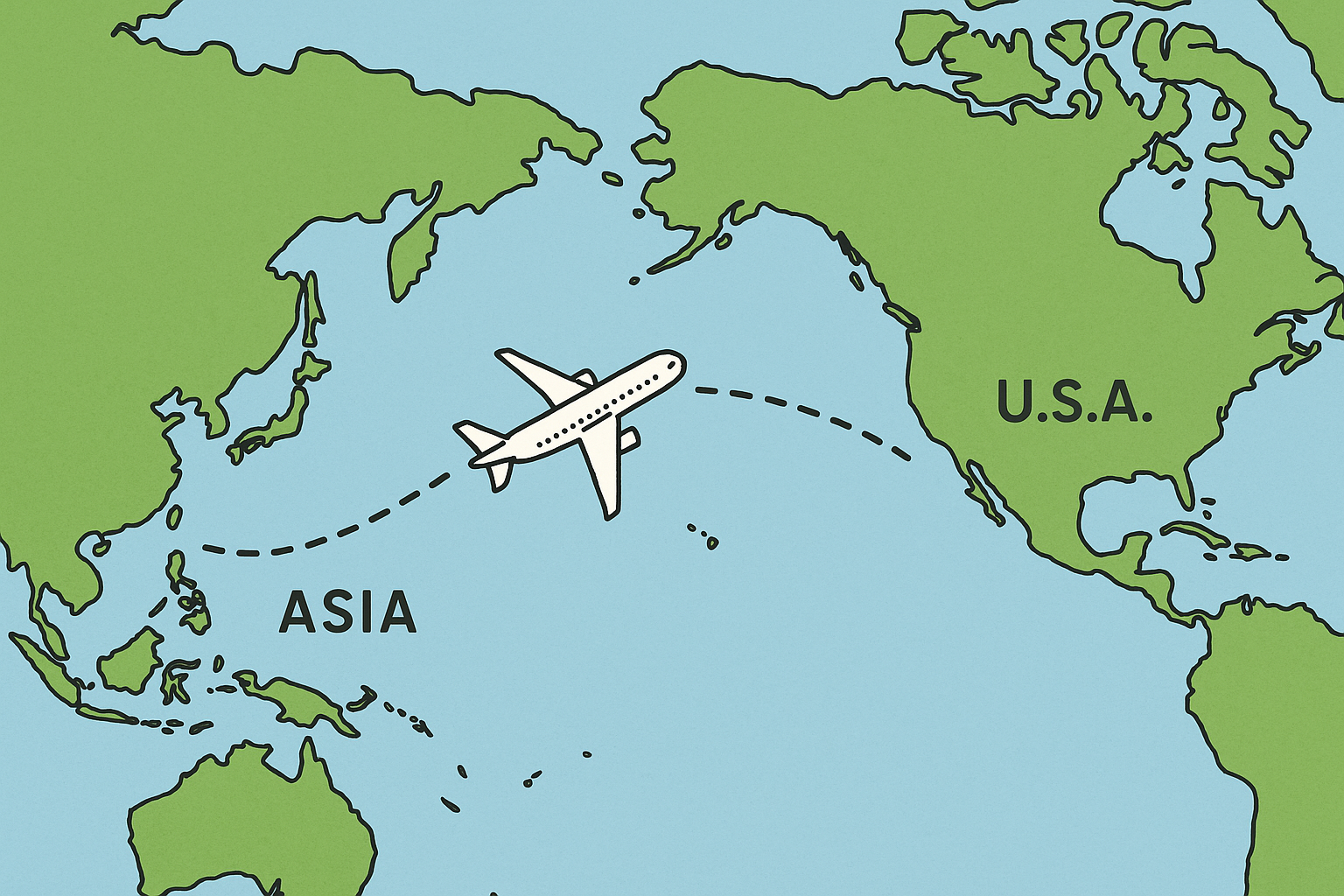Homogeneity vs. Diversity
Asian companies often struggle in the U.S. market due to cultural differences—homogeneous Asian markets versus diverse American consumer behaviors—and how strategic adaptation can lead to success.
Understanding Americans – Homogeneity vs. Diversity
Entering the United States market is challenging for Asian companies. While numerous factors contribute to their failures, one of the most common causes is the fundamental misunderstanding of cultural and operational differences between Asian markets and the U.S. marketplace.
Homogeneity in Asia vs. Diversity in the U.S.
During my trip to Asia, I vividly remember looking down from an office building and noticing that everyone had black hair—a striking visual example of cultural homogeneity that I had never witnessed before.
Most Asian societies—such as Japan, China, and Korea—are culturally homogeneous. Residents commonly share language, ethnicity, traditions, and social values. This shared identity fosters trust and relationship-based business dealings. Business success in Asia often hinges upon who you know: personal relationships, trust, referrals, and network-based sales are key drivers.
The United States, however, operates within a fundamentally different context. Unlike Asia, the U.S. is profoundly diverse. Its consumer population consists of individuals from varied cultural, ethnic, linguistic, and socioeconomic backgrounds. Diversity itself defines the United States. Conducting business in America demands engagement with individuals who may not share a common cultural background, experiences, or expectations.
Implications for Sales and Decision-making Approaches
In Asia, relationship-based selling is highly effective. Business relationships develop through long-term socialization, trust-building, consensus-oriented decision-making, and strong personal networks. Companies succeed by leveraging these relationships, prioritizing personal connections over purely transactional exchanges.
Conversely, in the U.S., companies cannot rely solely on relationships based on cultural or national affinity. Conducting business in America requires a broader-audience strategy. It becomes significantly more about the quality and relevance of the product or service provided. Companies must reach out broadly, systematically, and continuously. For B2B sales, the lack of pre-existing cultural or social ties makes the use of Customer Relationship Management (CRM) platforms, such as Salesforce, essential. It is essentially a numbers game, where tracking leads, interactions, and conversions systematically becomes crucial.
While B2B sales in Asia often involve convincing key individuals by adapting specifically to their unique personal and organizational needs, succeeding in the U.S. requires ensuring your product or service closely matches the distinct needs of defined user segments. Although these approaches might seem similar, they are fundamentally different in execution.
Decision-making: Consensus vs. Fragmentation
Some Japanese companies still utilize a decision-making process wherein a document circulates among stakeholders for approval, indicated by signatures in designated boxes at the top. If even one decision-maker declines to sign, the entire project halts.
Asian markets often benefit from consensus-driven decision-making, underpinned by collective values and unified cultural identities. Organizations typically understand customer preferences clearly because shared cultural values create predictable consumer behaviors and homogeneous buying patterns.
In the United States, the decision-making process is far more fragmented. Diversity introduces complexity, with U.S. consumers having distinct expectations, preferences, and buying behaviors. The pluralistic nature of American society renders consensus-based marketing largely ineffective. Companies must instead deeply understand specific demographic and psychographic segments, each with unique characteristics, desires, and decision-making frameworks. Individuals come from varied backgrounds, motivations, and circumstances. For example, someone who recently migrated from India to New York may seek to impress their employer to secure their job, whereas someone from the Midwest may adopt a more relaxed attitude focused on simply doing good work. The U.S. is large and diverse, making granular segmentation, precise targeting, and localized market intelligence critical.
Strategic Implications: Adapting to the “Amazon Shopping Mall” Reality
The U.S. can be envisioned as the world’s largest Amazon shopping mall—an endless variety of products offered to a diverse, demanding, and discerning customer base. Nearly every global product is available in the U.S. However, merely entering the market does not guarantee sales success. American consumers, shaped by their varied cultural backgrounds and increasingly “Americanized” behaviors, exhibit diverse purchasing criteria and loyalty drivers.
Asian companies, therefore, must fundamentally adapt to this market reality. Effective adaptation requires: • Engaging with Potential Customers: Conduct thorough dialogue to understand their pain points, which likely differ significantly from those of Asian customers. • Localized Market Research and Analysis: Gain insights into the fragmented consumer landscape through detailed analytics, segmentation, and consumer profiling. • Adaptation in Organizational Culture: Recognize that U.S. companies and consumers make decisions differently. Embrace flexible, individualistic, and results-driven organizational practices. Decisions impacting the U.S. market should originate within the U.S. • Brand Localization and Communication Strategies: Develop nuanced marketing campaigns specifically tailored to appeal to diverse and segmented American consumer groups.
What Does This All Mean?
Expanding into the U.S. market is not merely geographical growth—it represents a strategic and cultural transformation. Asian startups must acknowledge inherent differences in consumer culture and operational norms, recognizing that strategies effective in their home markets rarely transfer wholesale. Success in America requires deliberate adaptation, strategic flexibility, and appreciation that diversity defines every aspect of the marketplace. Companies that embrace and implement these principles substantially increase their potential for sustainable growth and profitability in the world’s largest market.
